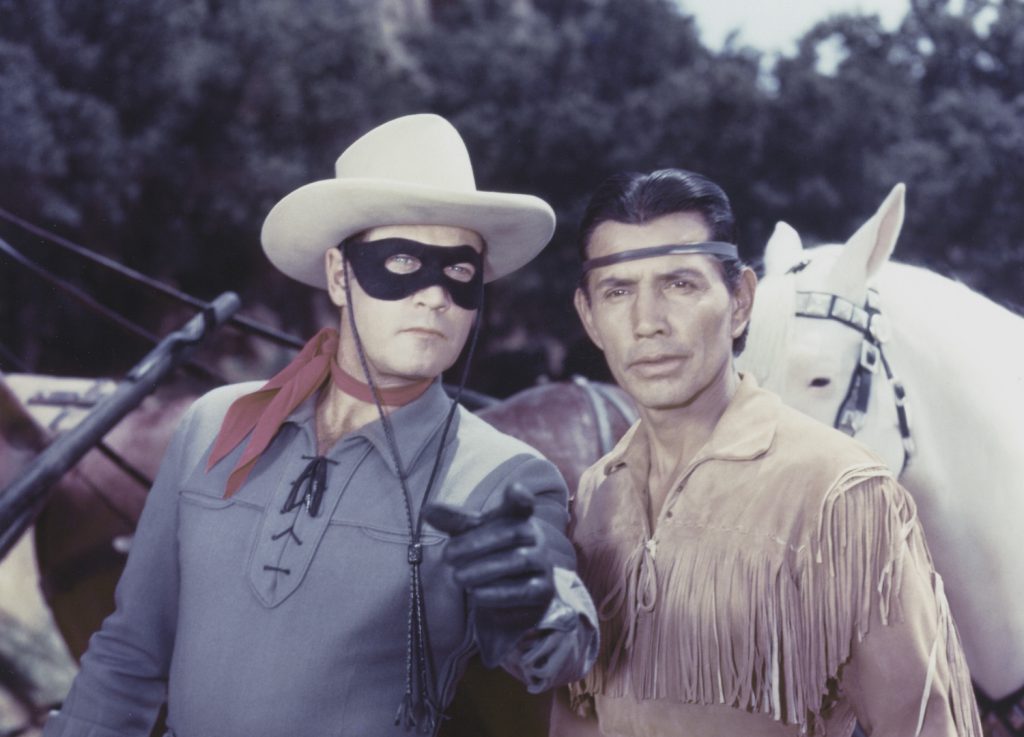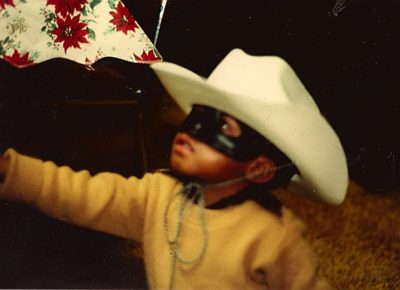“Cowboys and Indians”—When Dirt Rocks Are Dynamite

“With his faithful Indian companion Tonto, the daring and resourceful masked rider of the plains led the fight for law and order in the early West. Return with us now to those thrilling days of yesteryear. The Lone Ranger rides again!”
—Opening narration for the 1956 Lone Ranger feature film
Somehow during play
the rules changed
so you always wore the Cowboy hat
and Simon the war paint.
It became something more
than “Cowboys and Indians.”
You in the plastic hat
fingers aimed
at the pillowcase flopping in the wind.
When our dirt bikes became Quarter Horses
and Appaloosa, our cul-de-sac the Great Plains,
dirt rocks for dynamite
always thrown hard enough to break.
It was with your new water gun pistol,
shining like a new nickel that found its way
from your blue jeans pocket
into our faces, red with fear.
Remember the bushes in the center (the wilderness)
where the Cowboy would sneak up on the Indian
peeking from behind his lipstick war paint,
“Stick ’em up,” you would say.
And for a few hours the hedges were the edge of “civilization,”
majestic mountain ranges that led to wherever imaginations followed.
We were only pretending
when the Indians gave chase,
when the Cowboy aimed and while shooting—
“Tonto” fell, screaming,
his knee scathed and bleeding.
He needed our help, and so we gathered our sticks,
which for a moment
became bows and arrows,
some dynamite and nerve.
We surrounded you near the curb.
All of us in our pillowcases,
inching toward you—
as you sprayed him.
There was so much water
his war paint had washed away
and he was crying but you
continued trying to drown him in bullets.
Until you saw the shadows from above
and like a ring of fire,
dirt rocks descended
breaking you into surrender.
Simon never recovered,
and we saw you less and less,
and when I think back
I guess—
that is when we all grew up
away and apart.
































